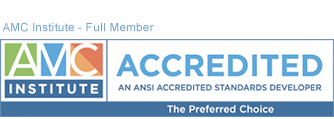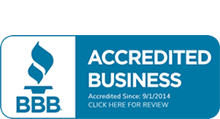Robert O. Patterson, JD
CEO/ Principal
The Center for Association Resources, Inc.
1. Why should my organization engage in strategic planning?
Every organization has stakeholders to which it is accountable. Building and carrying out a strategic plan on their behalf means you are listening to members’ wants and needs while remaining cognizant of constraints on the organization such as finances and competition. Click here to read more…
2. What are some of the benefits of strategic planning?
Well-crafted strategic planning yields a host of benefits that collectively fall under the umbrella of optimizing the organization’s future potential. This critical self-examination provides a road map your organization can deviate from, when necessary, during the course of the year. Ultimately, formulation of strategic plans leads to high realization of goals and gives a far better sense of direction for all stakeholders. Click here to read more…
3. Who should participate?
There should be a combination of both current board members and a few “rank and file” members that may be current committee chairs or envisioned potential leaders. Often, this scenario provides for an excellent opportunity to see potential leaders in a way that would not ordinarily be available. Click here to read more…
4. Can we facilitate this on our own?
An outside facilitator is positioned to ask questions for which you may think everybody knows the answers. An outside facilitator helps you flush out why you are doing what you are doing, and that is a real value. Click here to read more…
5. What does the strategic planning process entail?
The major components of the strategic planning process are the identification of where the organization is now and what resources it currently possesses. The process determines where the organization wants to be and the necessary steps to achieve those goals. The organization is taken from its current state to its desired future state. Click here to read more…
6. What should our organization do with the results?
Organizations that engage in a strategic planning process must commit to regularly monitoring and reviewing the steps that are identified and must be accountable to implement or adjust them on an ongoing basis. A well-articulated plan that results from a strategic planning process will also include regular progress-assessing intervals. Click here to read more…
7. What is the outcome of the process?
The outcome of the strategic planning process is a clearer vision of the steps to take to achieve desired results. The deliverables are unique to each client; however, they often include a plan document, goal assessments, and budget/capital-planning matrix. Click here to read more…
8. How can we make the results actionable?
Results of a strategic planning process are made actionable by setting them into functional steps in the yearly operating-plan document. All steps that have a financial component are added to the operating budget. Click here to read more…
9. How do we communicate the results of the process?
Accountability is a key component of the process. Clearly stating the results of the process to members, staff, and other key stakeholders through publications, news interviews, ads, and various meetings specific to the client are an important step to achieving not only accountability, but also consensus among those benefiting from the plan. Click here to read more…
10. How long does the entire process take?
Generally, the process begins with “homework” followed by a well-designed day or weekend during which the Board, committee, or group is led through a planning process by a facilitator. Results are then published and reviewed with the organization. The entire process may take between a few weeks to a couple of months. Click here to read more…







